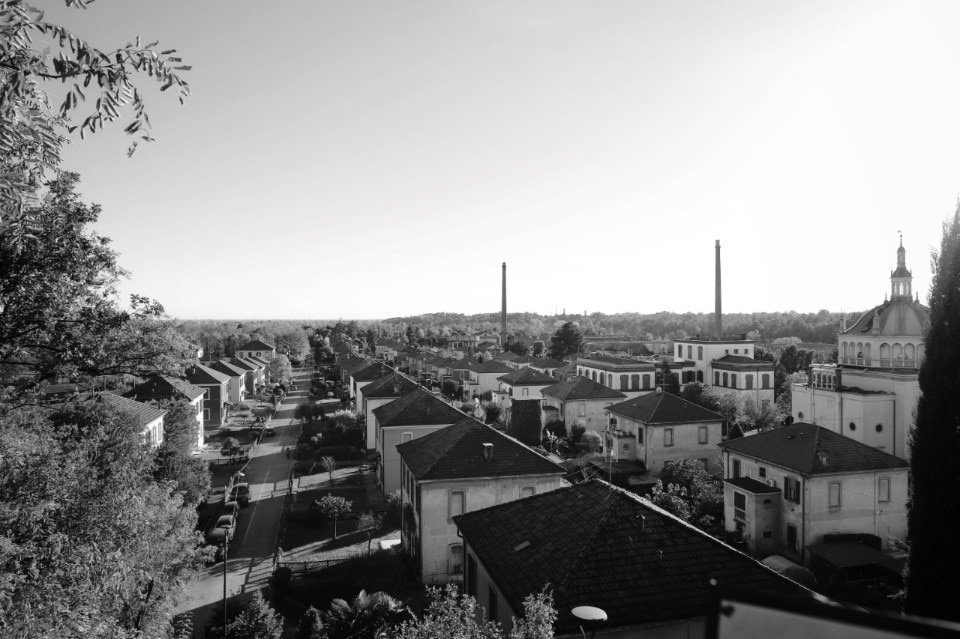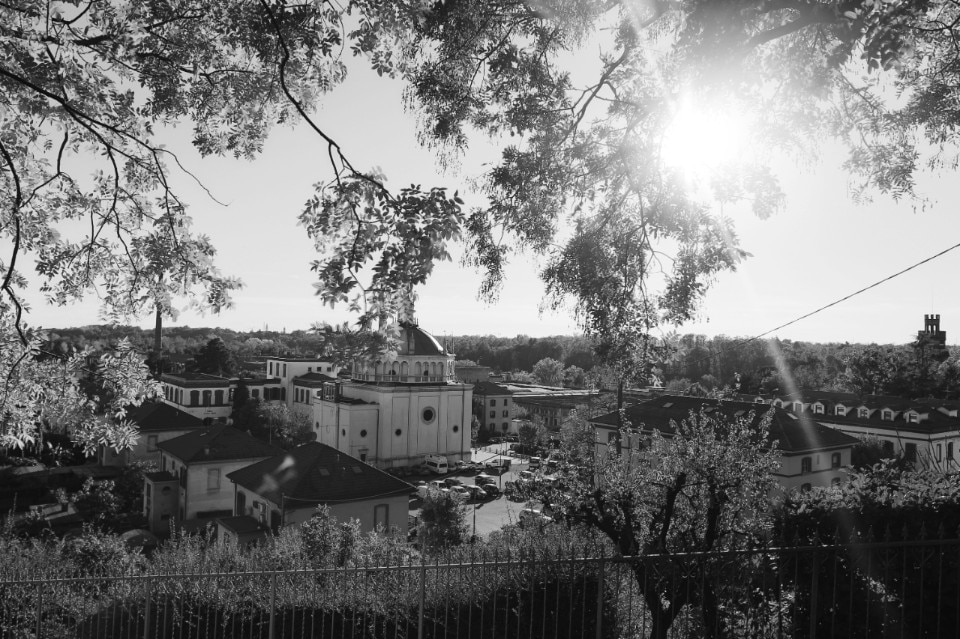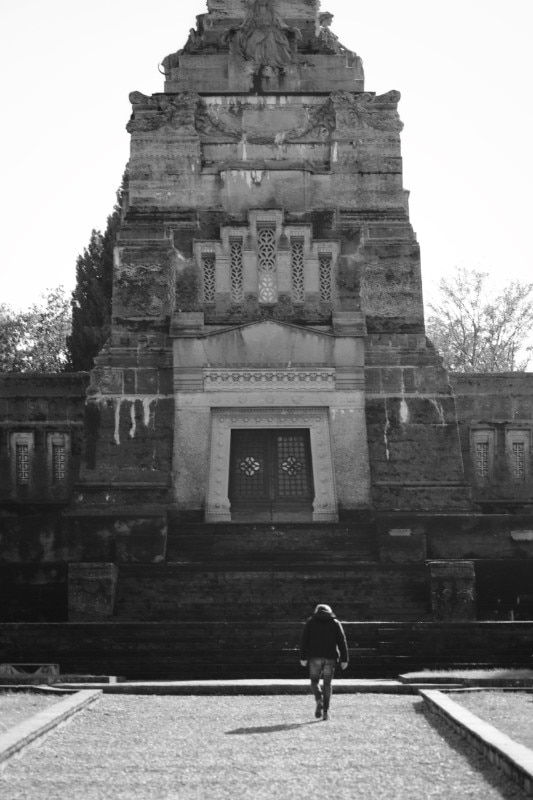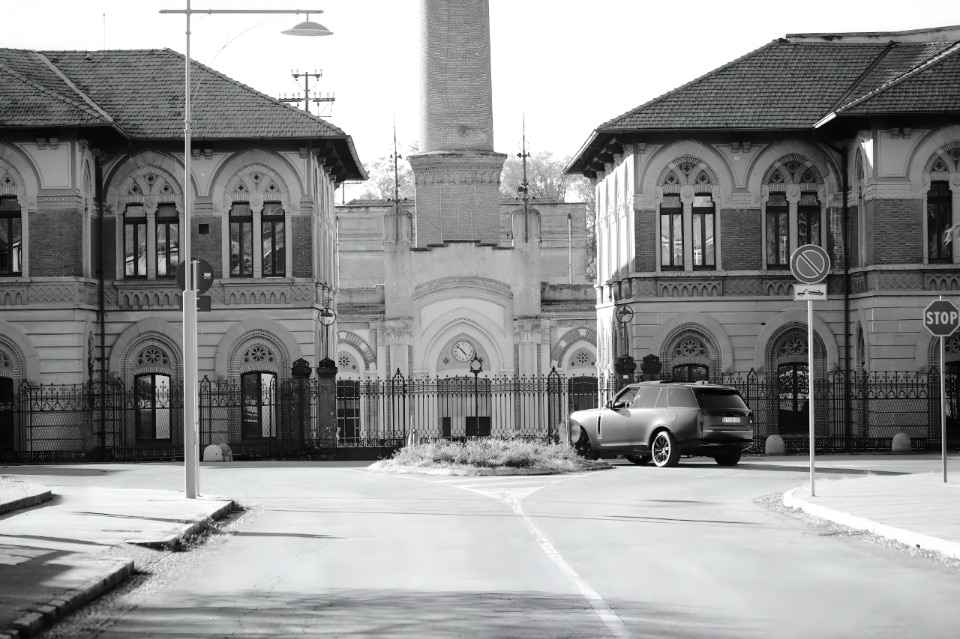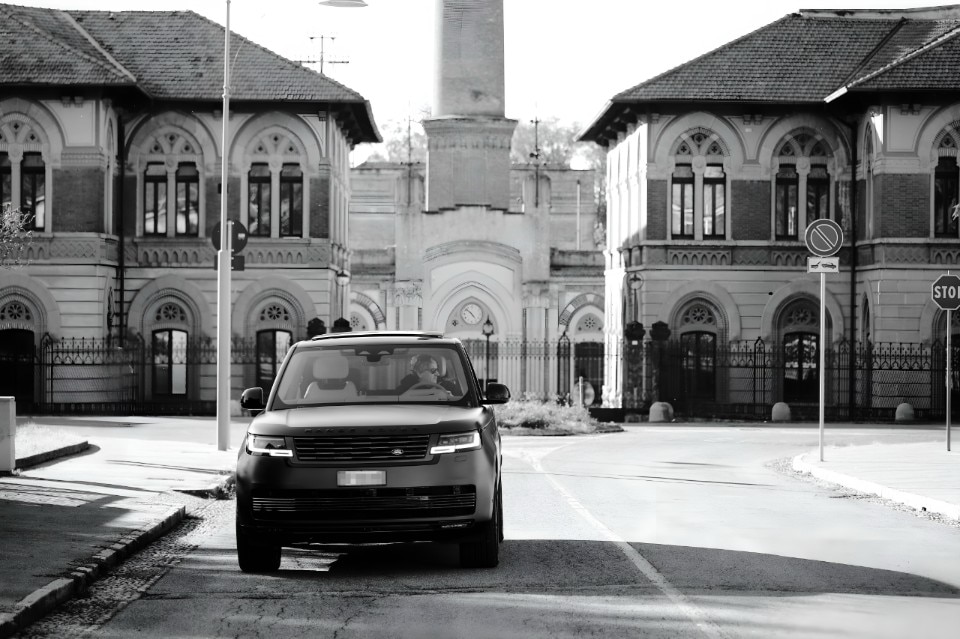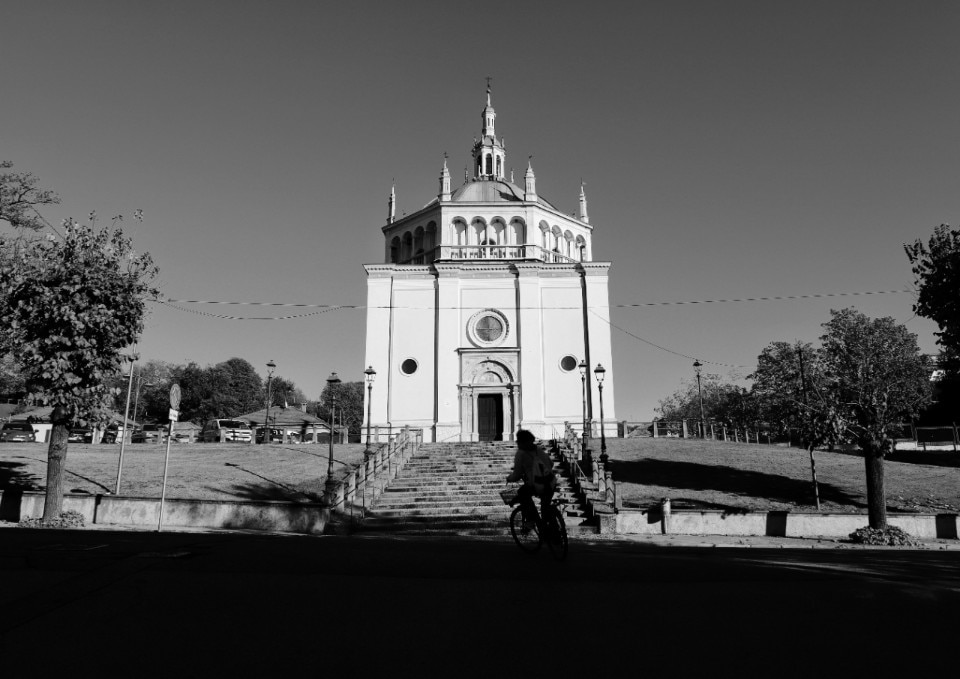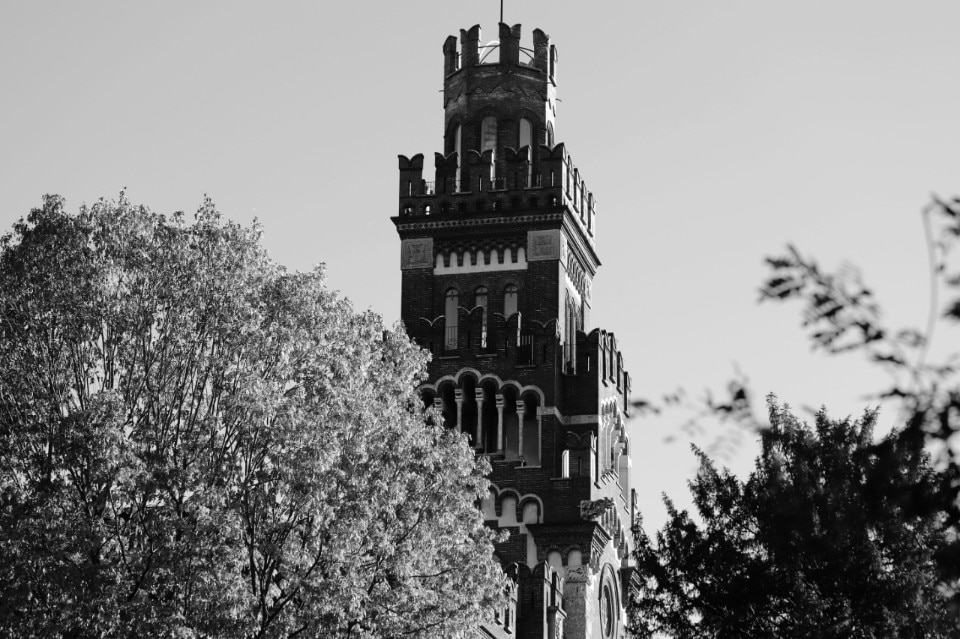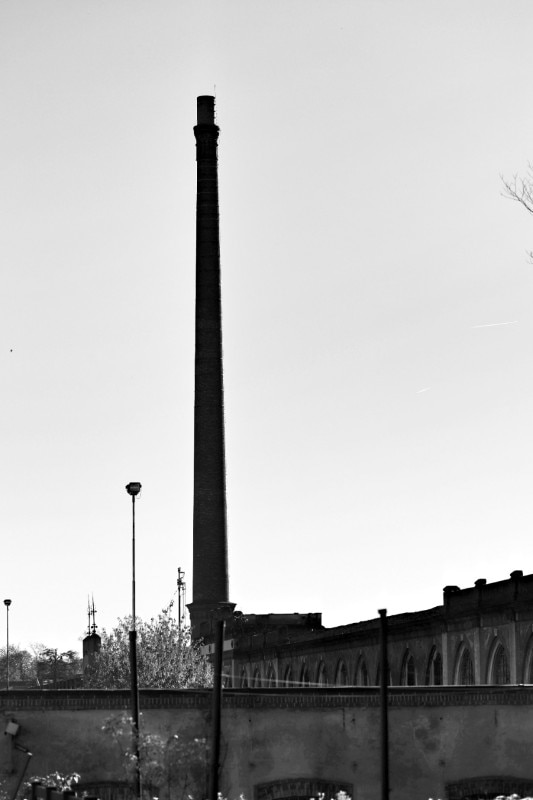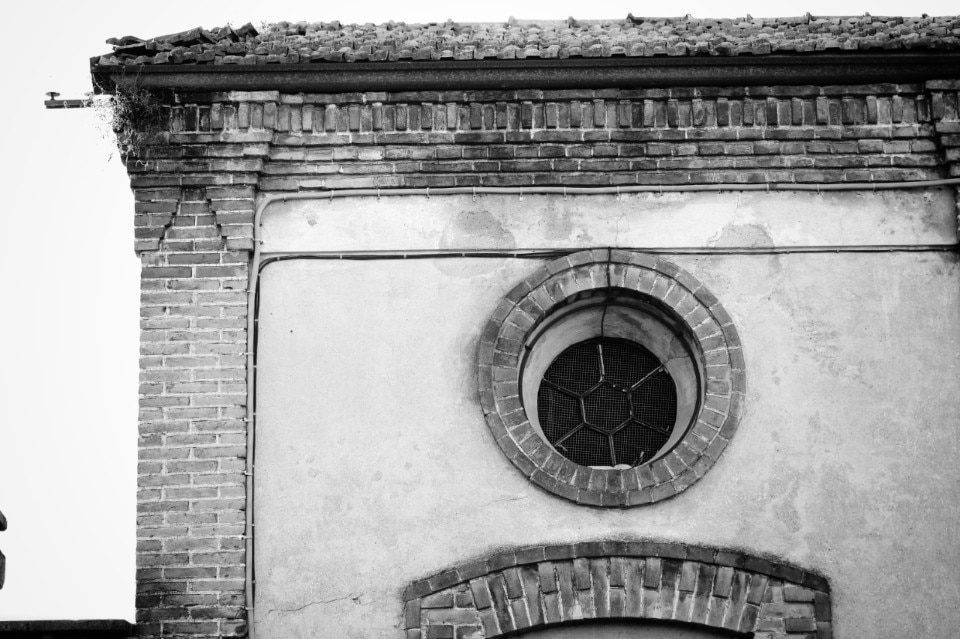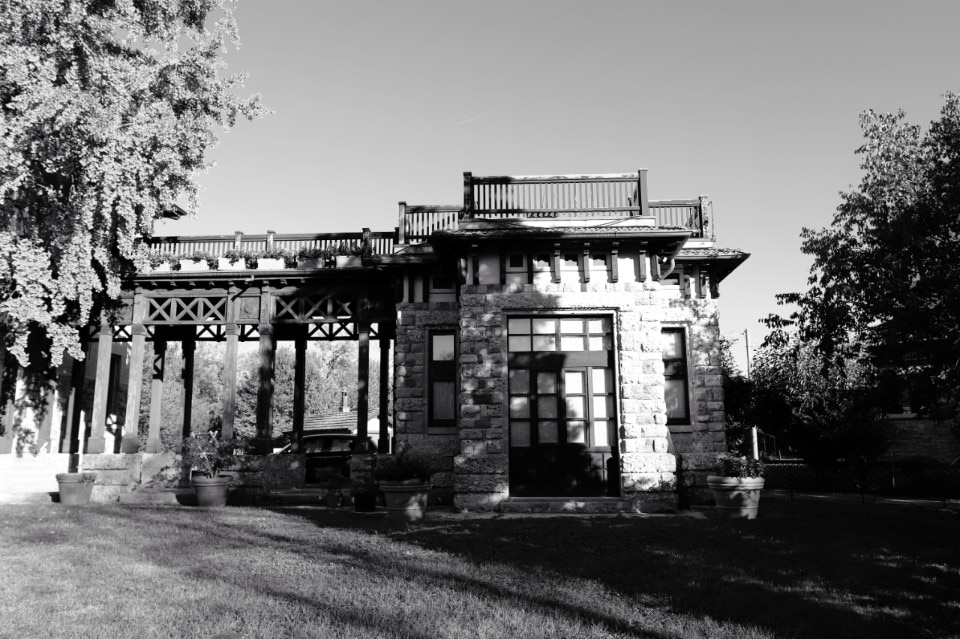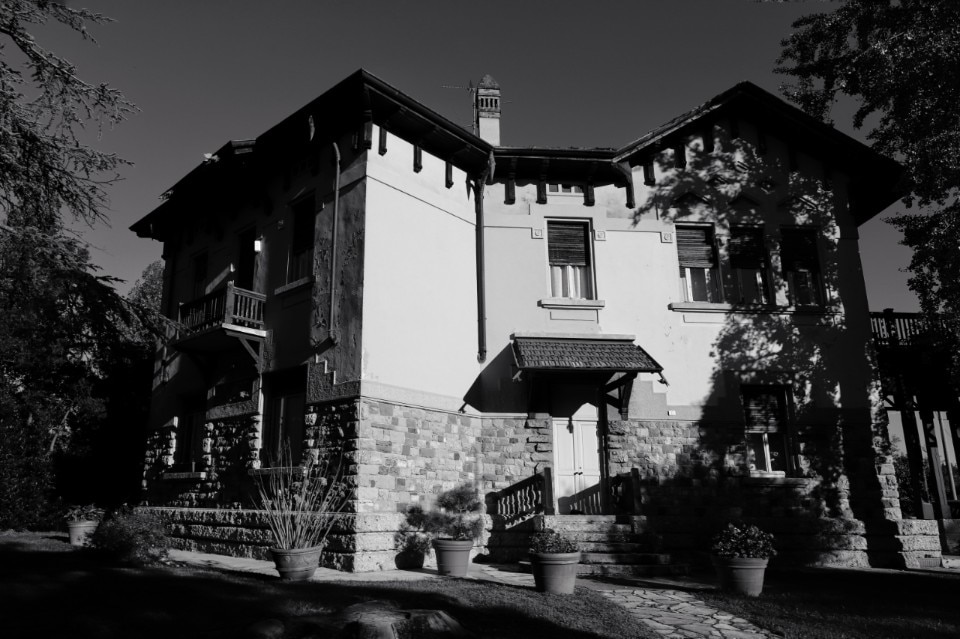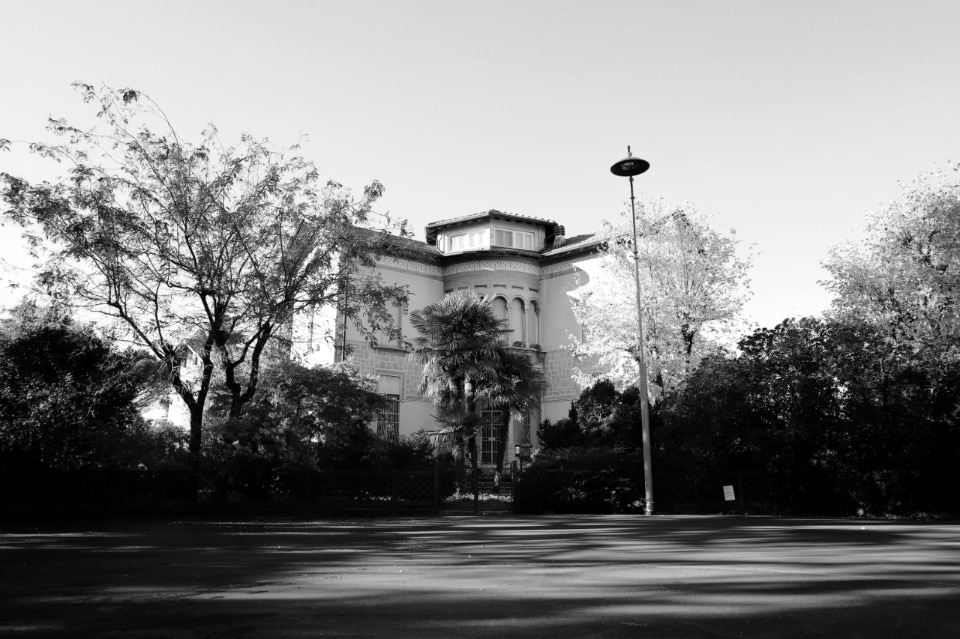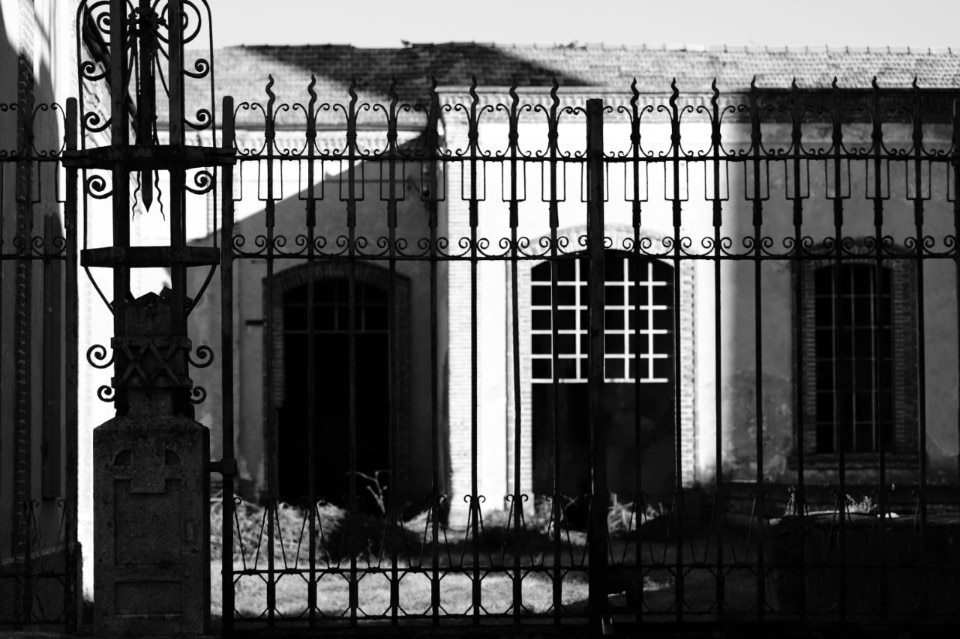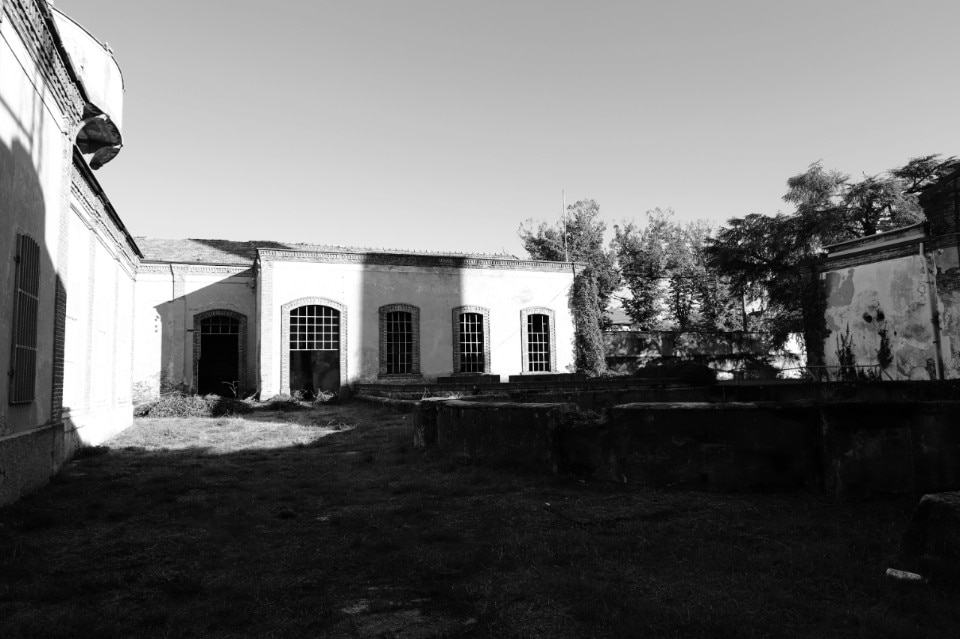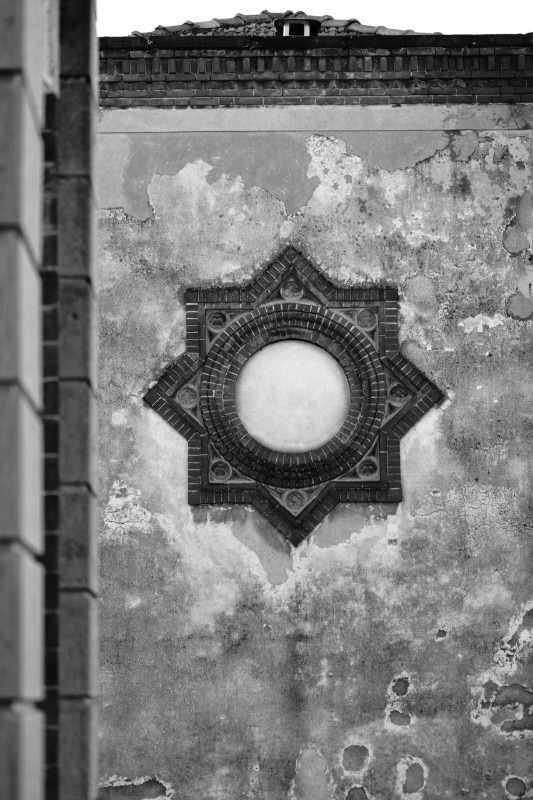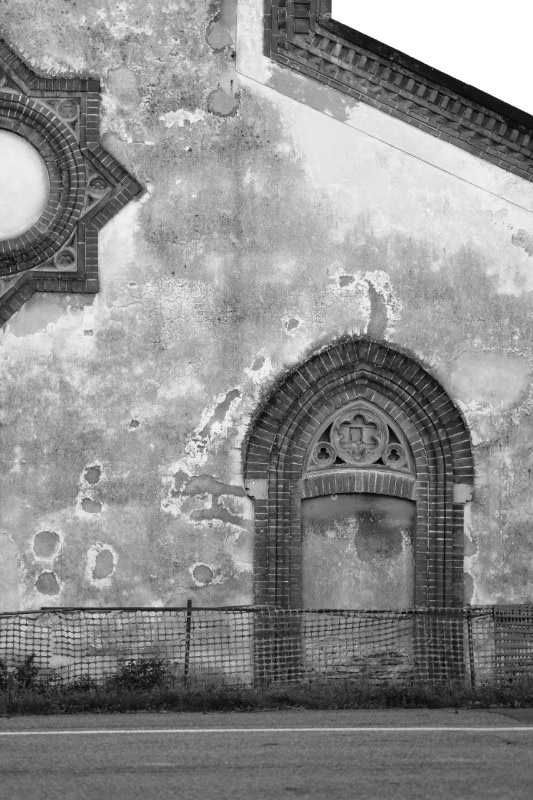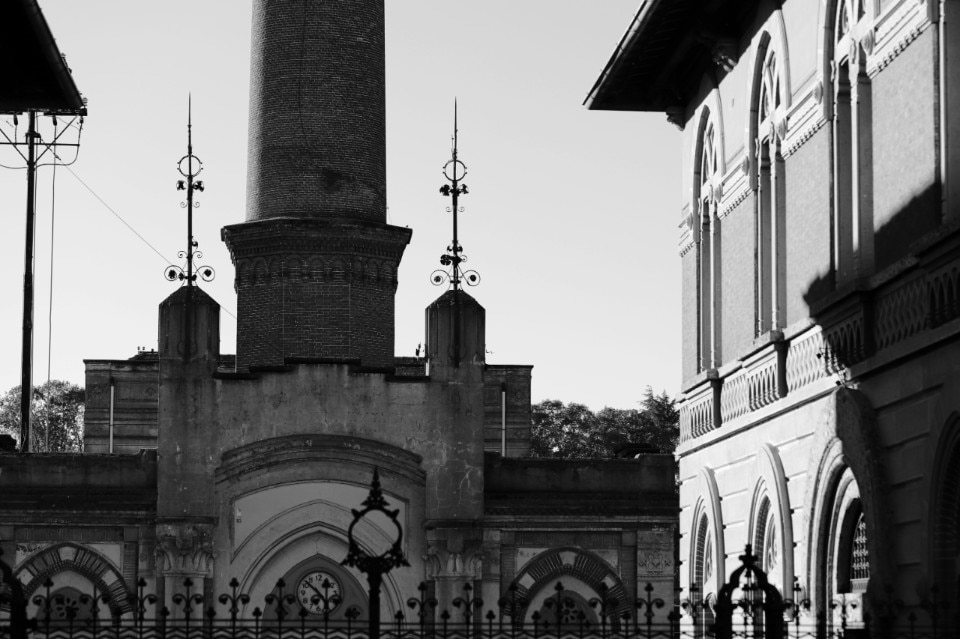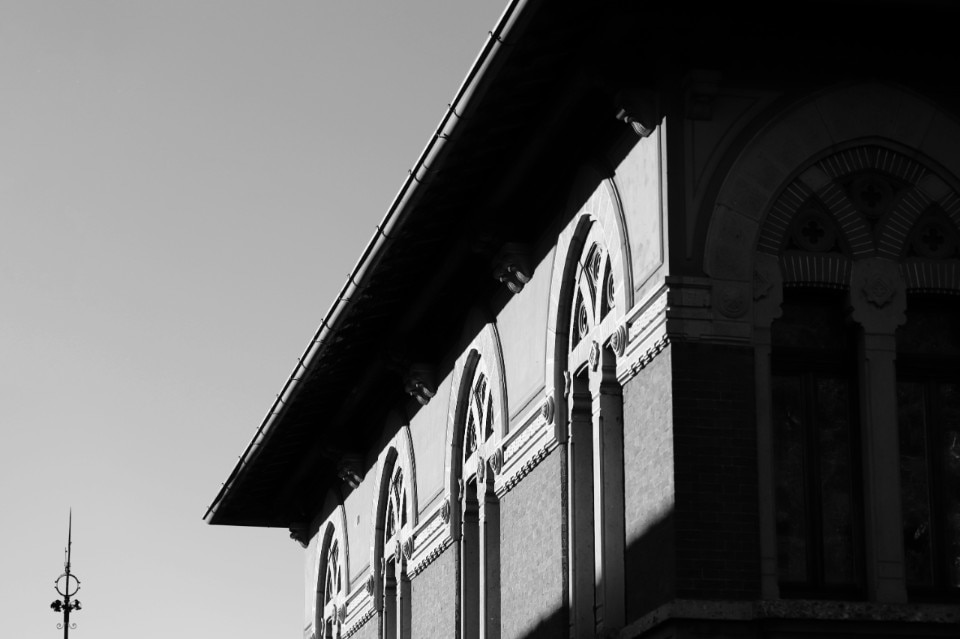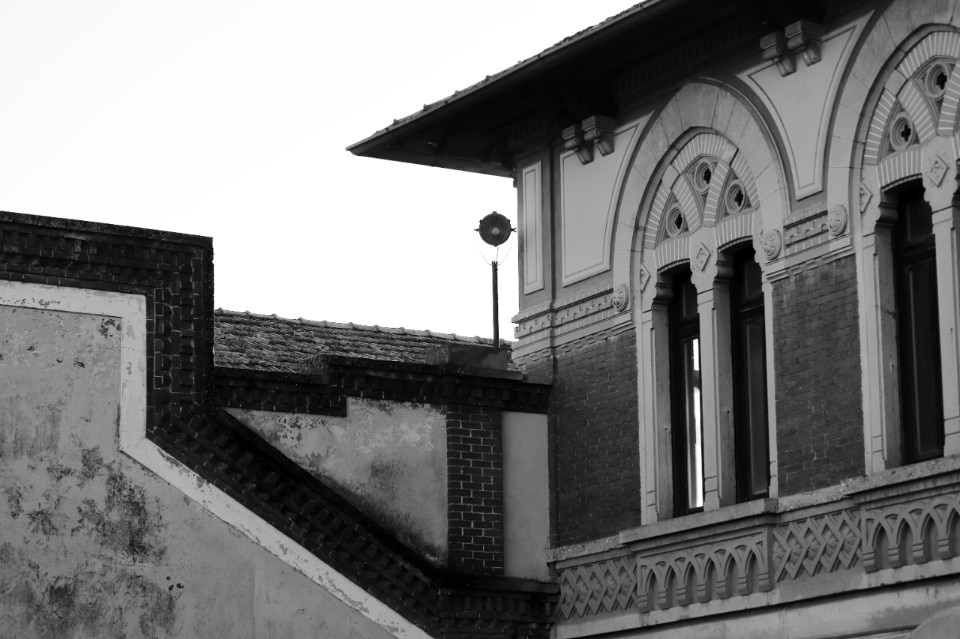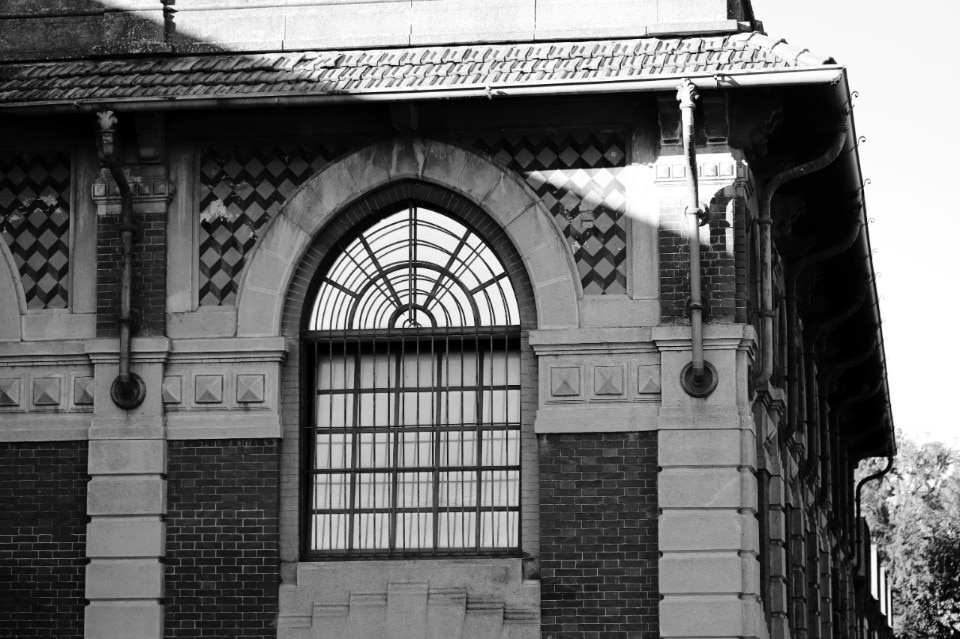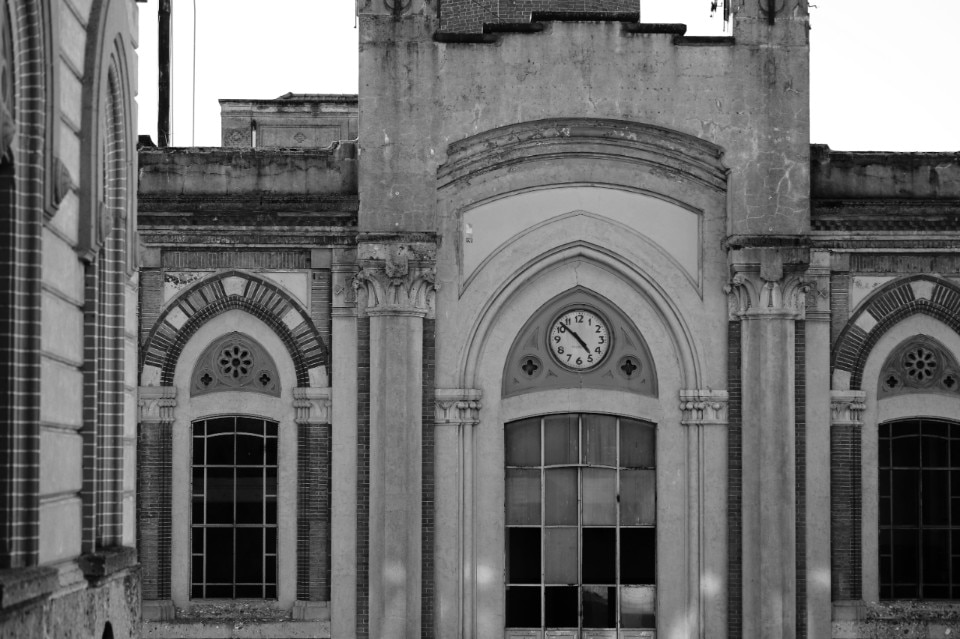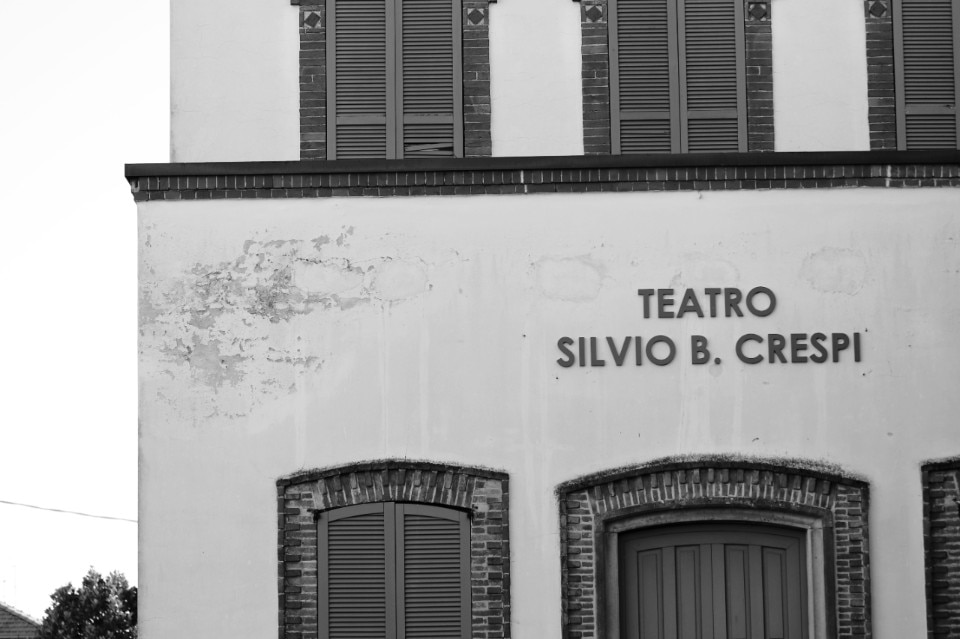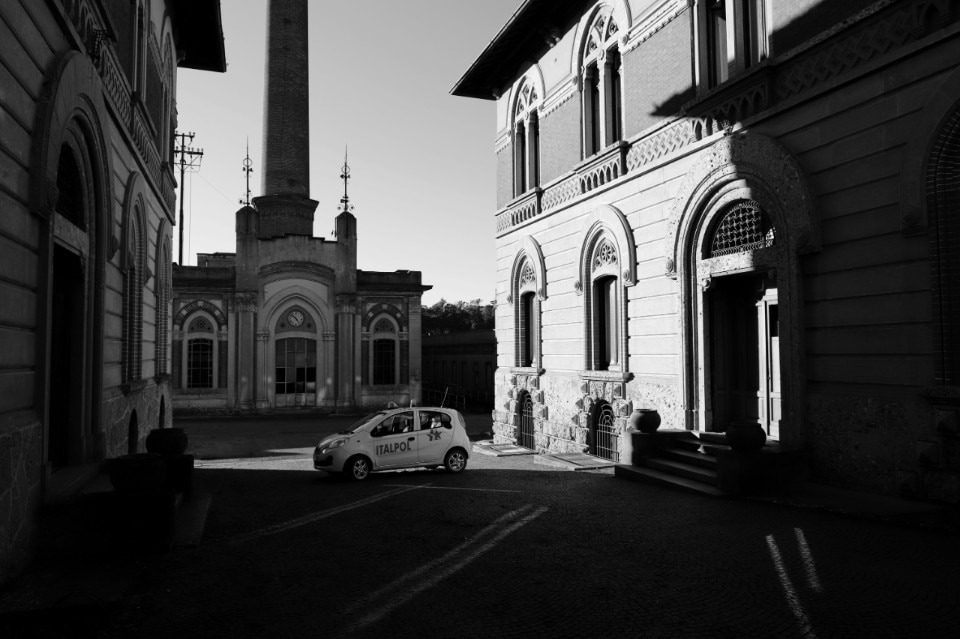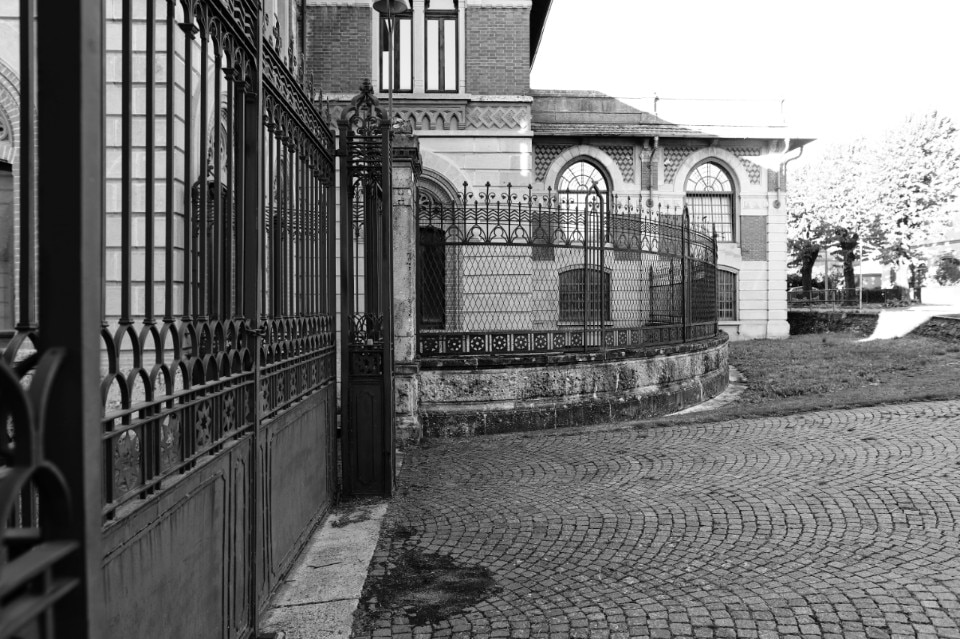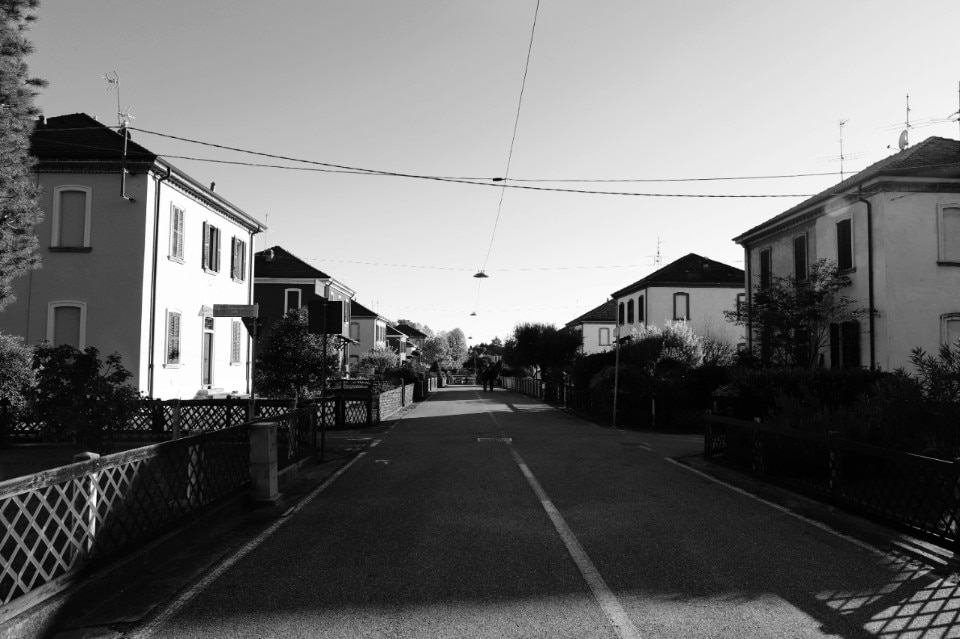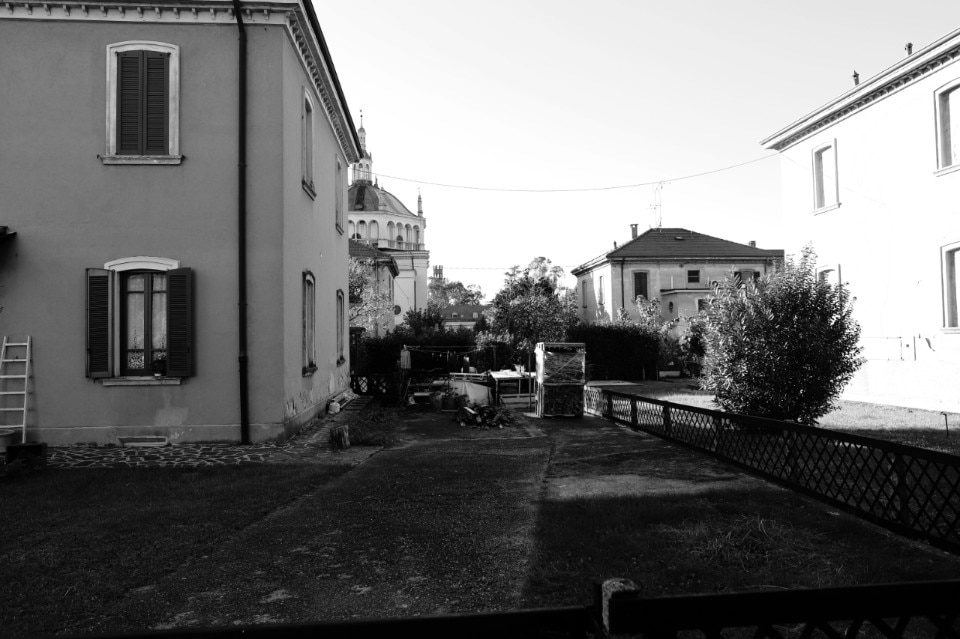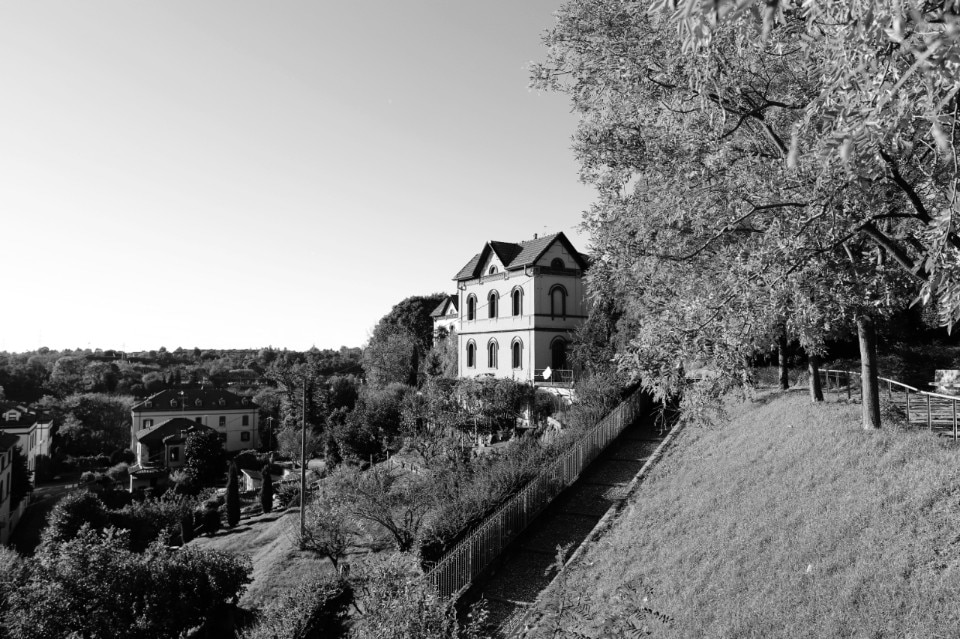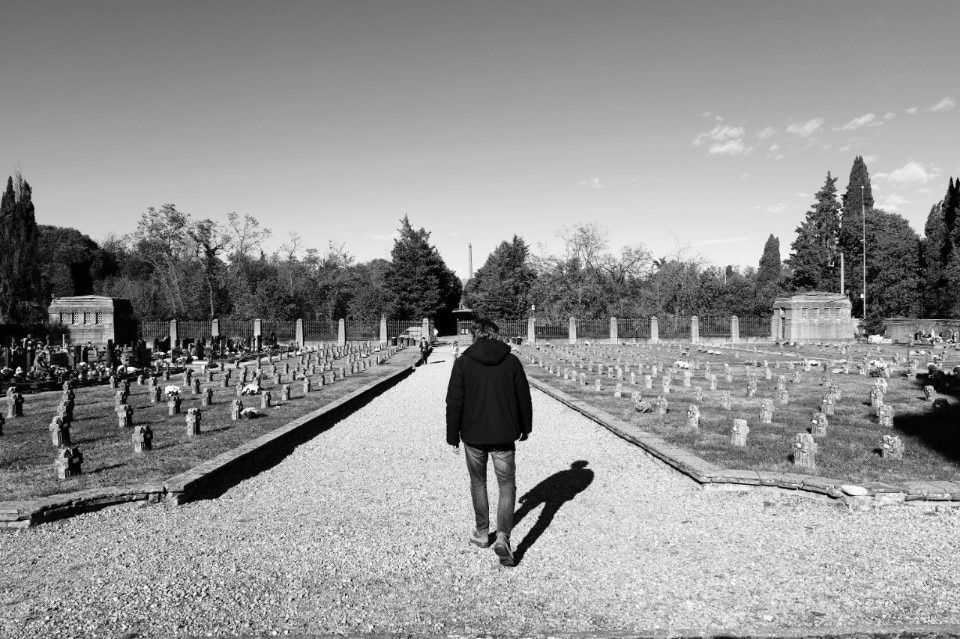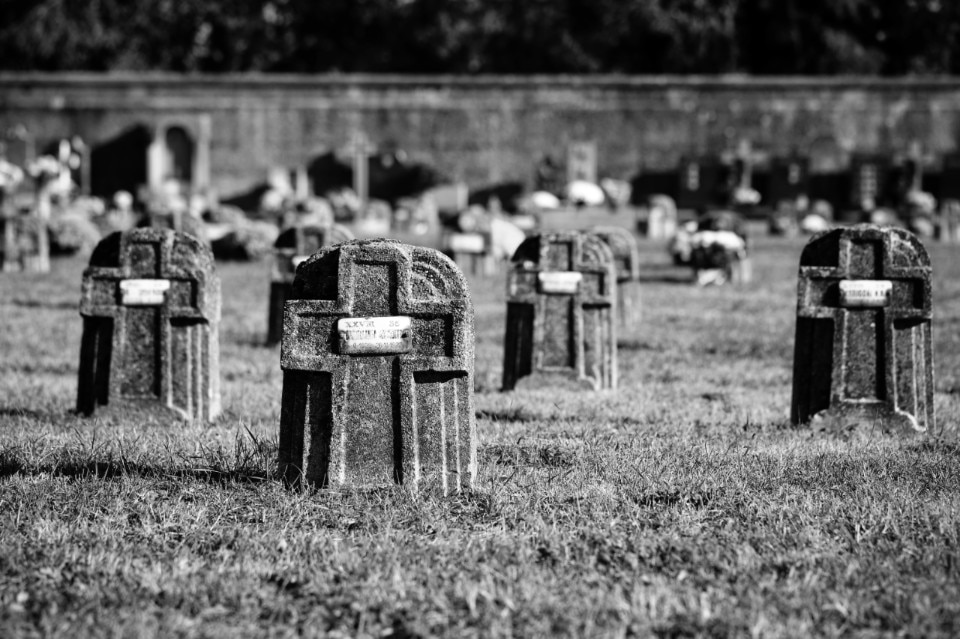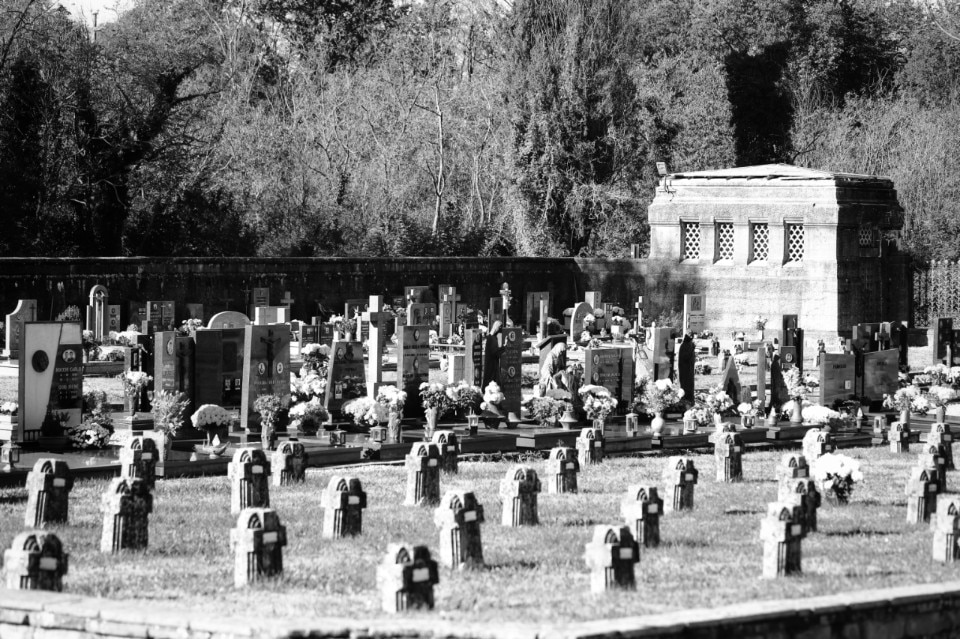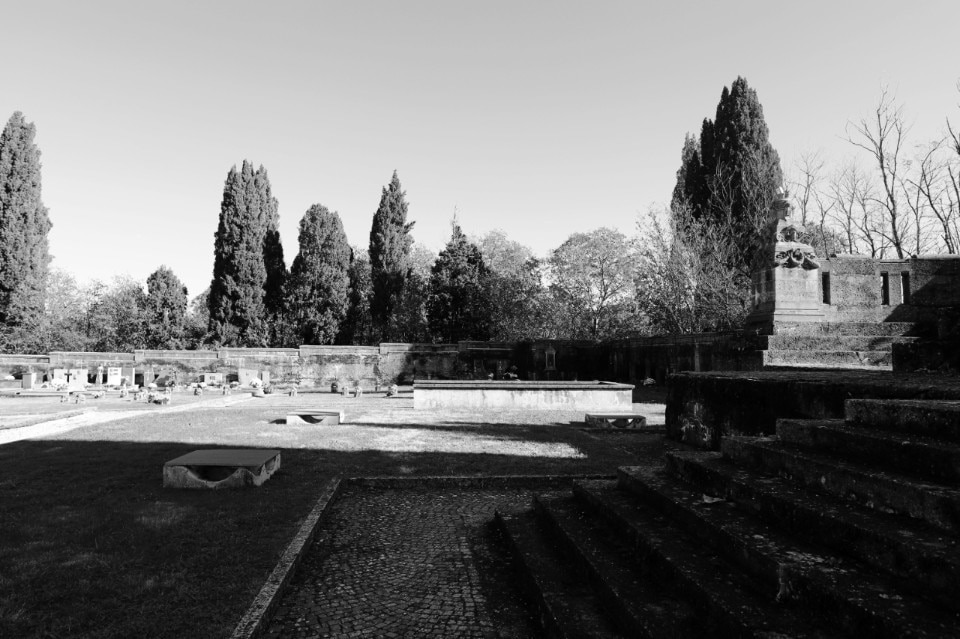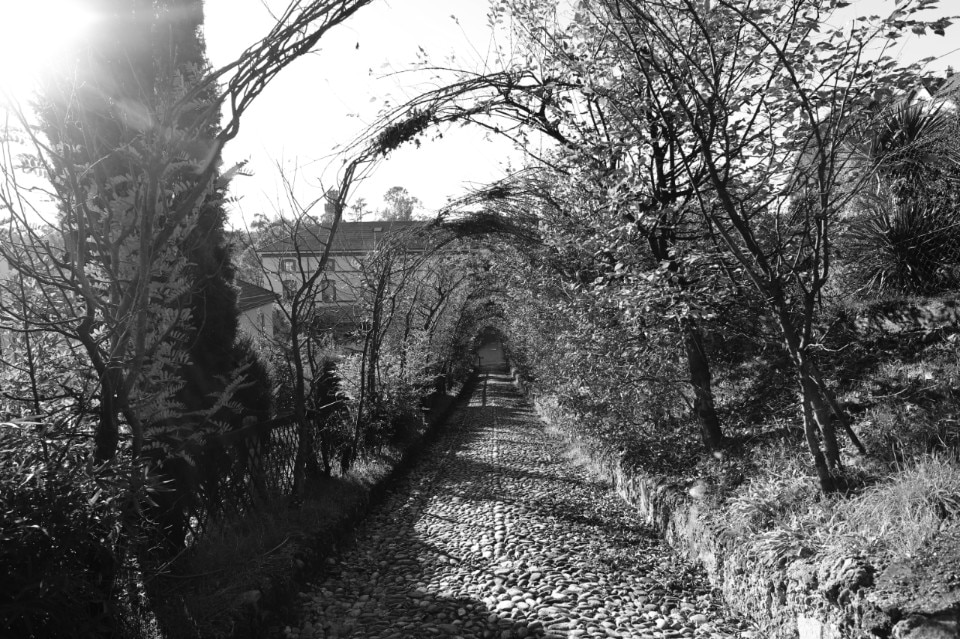This article will be published in Domus 1085, on newsstands in December 2023.
Travelling Italy in search of architecture as a kind of magic spell that can hold visions and illusions together, Crespi D’Adda seems an obligatory stop, both bright and dark. It is a workers’ village built from scratch in front of a cotton factory starting in 1877. Abroad, its precedents include Claude-Nicolas Ledoux’s Royal Saltworks in Arc-et-Senans, or Robert Owen’s Chorlton Twist Company in New Lanark, Strathclyde. In Italy, there was the Nuova Schio of Vicenza entrepreneur Alessandro Rossi, the Villaggio Leumann in Turin by the Swiss Carlo Giovanni Napoleone Leumann, and the Colonia Leucianorum by Francesco Collecini, built near Caserta in 1789 around a silk-dyeing factory at the behest of Ferdinand IV.
 View gallery
View gallery
Crespi D’Adda is different, however. Not only because it was built on uncultivated land at the confluence of the Adda and Brembo rivers, a difficult territory for all the Celtic, Roman, Lombard, Orobian and Visconti lineages that had passed through here without settling. And not only because it is an ingenuous utopia of Italian industrialisation, made of revolutionary machines but especially of people’s inhumane toiling.
This model settlement remains one of the last manifestations of the age-old paragon of architecture where the construction of utility cannot forgo beauty.
Crespi d’Adda is different because it exemplifies how architecture can coincide with time and space, illuminating a unique artificial composition of industry and life, which intersected and soon diverged into rapid decay and an ineluctable end.
Conceived by Cristoforo Crespi, who was as wealthy as he was demanding, both visionary and pragmatic, the village was completed by his devoted and hypersensitive, but above all cost-conscious son, Silvio. This model settlement remains one of the last manifestations of the age-old paragon of architecture where the construction of utility cannot forgo beauty. A precept against which the second half of the 20th century rebelled. A triumph of Euclidean geometry, Crespi d’Adda sought to infuse mass production with an ancient measure and a noble and religious aura.
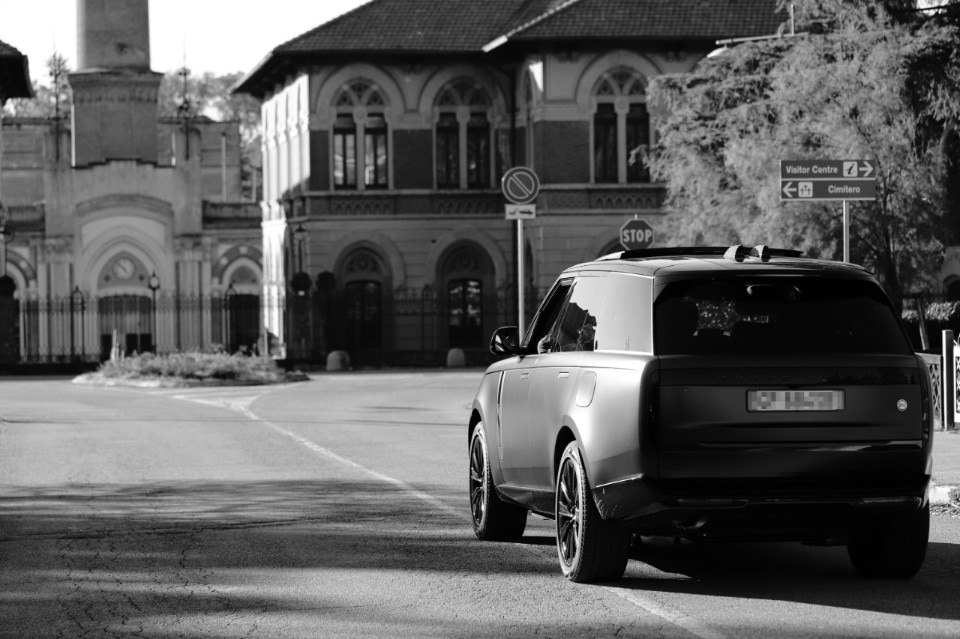
It is based on a theory of regular small houses that symbolically contemplate the factory building, which is no longer the container of a function, but an urban system that divides the village into three parts: the residential zone to the east, the public utility area at the centre, and the industrial site to the west. At the southern end, a row of tall cypresses leads to a cemetery that solemnly displays the eclectic style of the late 19th century. At the northern end stands the estate’s faux-medieval castle.
At first glance, the master plan simply seems to serve the functions that the rhetoric of the First Industrial Revolution envisioned for the city: factory-worker houses, communal buildings (a church, an after-work club, a theatre, schools, a hotel, a post office, a small hospital and public baths), and the final portion dedicated to work and ownership, with the large factory and manor house projecting paternalism over the whole project. Looking closer, however, the buildings for work and life poetically combine a cultural vision that permeates personal existence in formal equilibrium with the new paradigm of a total factory.
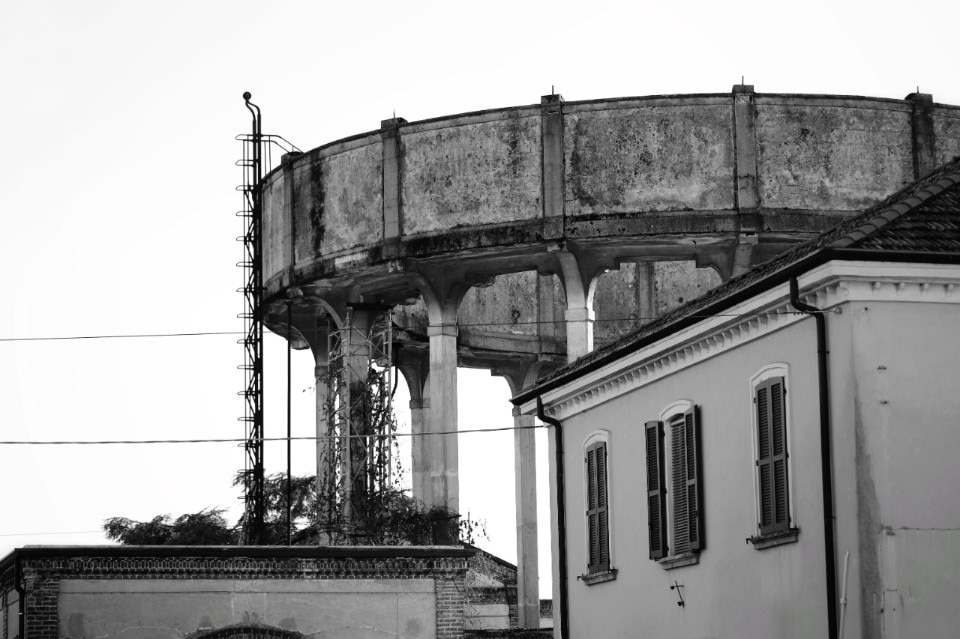
Crespi d’Adda is an initiatory journey into the religion of work, which was the driving force that opened the door to today’s society. Therefore, the working-class lexicon does not apply to these dwellings, because their architectural and political idea was completely different. The workers’ houses, designed to accommodate two families, were immediately enlarged with a vertical or horizontal division. Each equidistant from the other, with a 12-square-metre base, they produced a harmonic rhythm between solids, voids and green areas. The bathroom was replaced by a latrine in the garden and public baths at the centre of the village. All of them, however, had terracotta decorations and were surrounded by a fenced garden, interweaving the straps that bound the bundles of raw cotton arriving at the factory. In a non-Italian tradition, there was a flower garden at the front and a vegetable garden at the rear.
Crespi d’Adda is an initiatory journey into the religion of work, which was the driving force that opened the door to today’s society. Therefore, the working-class lexicon does not apply to these dwellings, because their architectural and political idea was completely different.
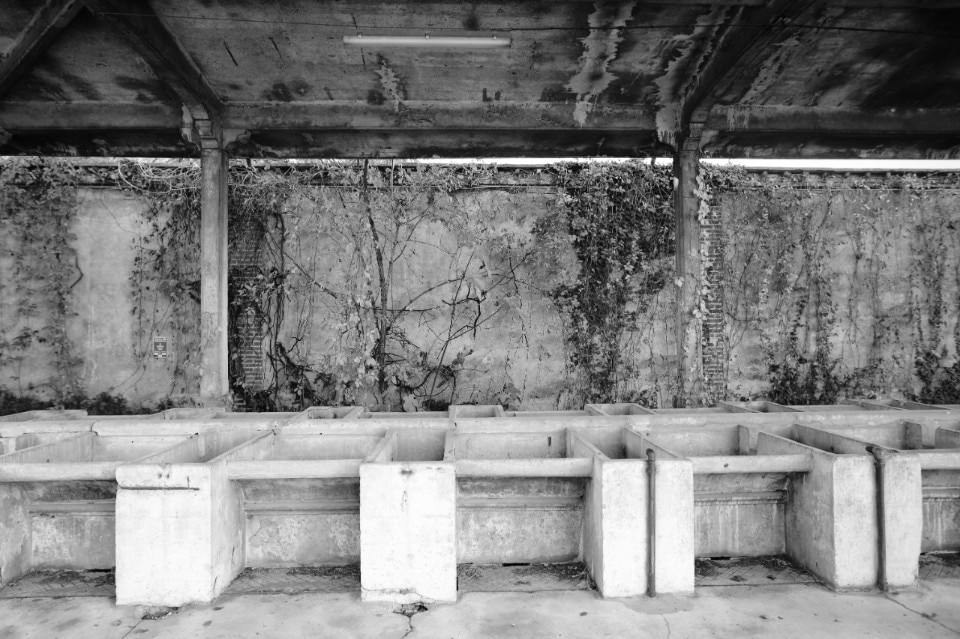
This combination of atavism and modernity did not survive the Fascist banalisation of the 1930s, when Crespi D’Adda was autarkically renamed Tessilia. Walking south past the houses of the factory foremen, which were more richly decorated than the workers’ homes, one encounters nine singlefamily villas of a different tenor. Larger and covering several floors, they have classic Art Nouveau extensions such as terraces, decks, gazebos, colonnades and winter gardens.
This is where the factory management lived, surrounded by gardens that break up the celebratory decorations of the Austrian Secession, but also statues, friezes and pinnacles made of local sandstone and river stones. A perfect pastiche of styles representing the first half of the 20th century, these houses do away with the vegetable plots to expand their gardens and add more flowers and tall trees.
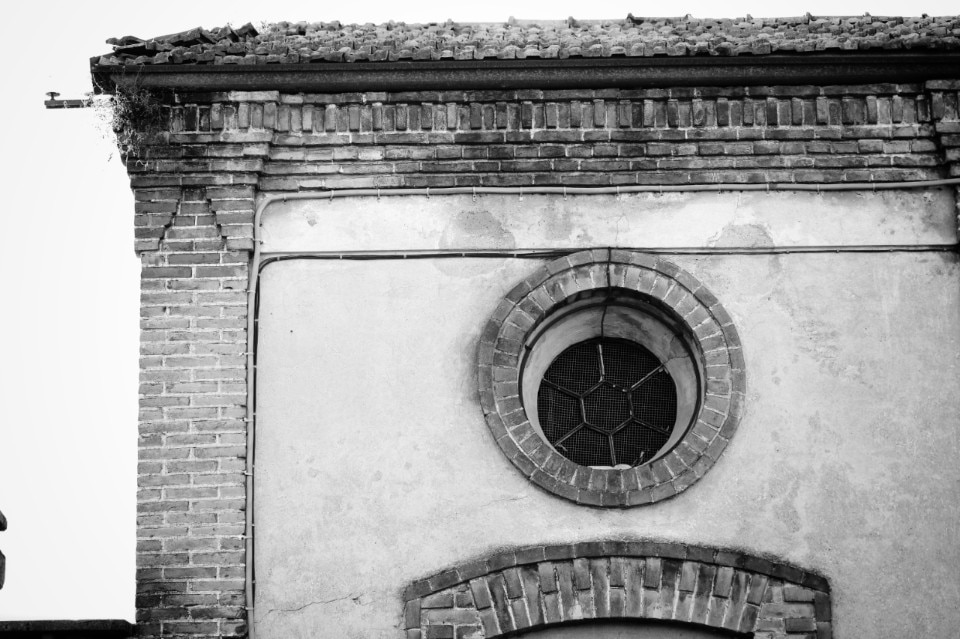
In the late 1930s, the overseas sale of cotton was halted to satisfy an autarkic economy aimed at war. The physiognomy of Crespi d’Adda was transformed along Mussolinian lines, with an architectural style that rejected both early 20th-century eclecticism and the newly born rationalism. The friezes, decorations, arches and triple-lancet windows gave way to orthogonal lines intended as synonymous with functionality and justified by “objective budgetary requirements”.
The red-brick outlines of the windows, which stood out against the white plaster walls, were removed along with the decorations of the attics, which, although modest, gave a bourgeois tone to the dwellings of the workers who, by extension, had never been proletarians but the first tier of the middle class. The stringcourses also disappeared, along with the pastel colour of the houses, which could at most retain the white, red and green of the tricolour flag.
Rather than a display of wealth and social dignity, Crespi d’Adda thus ended up as a stage for work, understood as a creative force for transformation. It was also the end of architecture not bound to the horizon of efficiency; an architecture whose meaning lay in “beautiful and varied form” (Palladio), because a building’s functionality only concerns its users, while beauty concerns everyone.
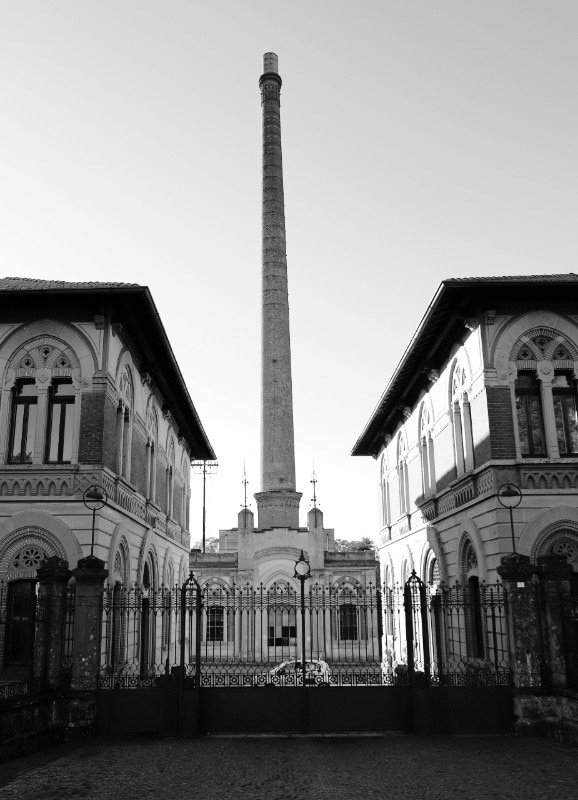
Looking at Crespi d’Adda today, liberated from its Fascist rewriting, every detail seems to demonstrate representativeness prevailing over functionality and guiding it into active life, which was served by buildings that idealise working-class existence. It was not only the idea of creating new, modern, hygienic and educational spaces, but also the proof that proportions, forms, decorations and, in a word, architecture can be the manifesto of a new society entering the new century. Crespi d’Adda represents the end of the separation between useful and beautiful, industrial and artistic, functional and contemplative. Before history showed all the evidence of a realisation that stigmatised social and labour hierarchy, or rather the gap between imagination and reality.
The feature Italian journey is created with the support of Jaguar Land Rover


